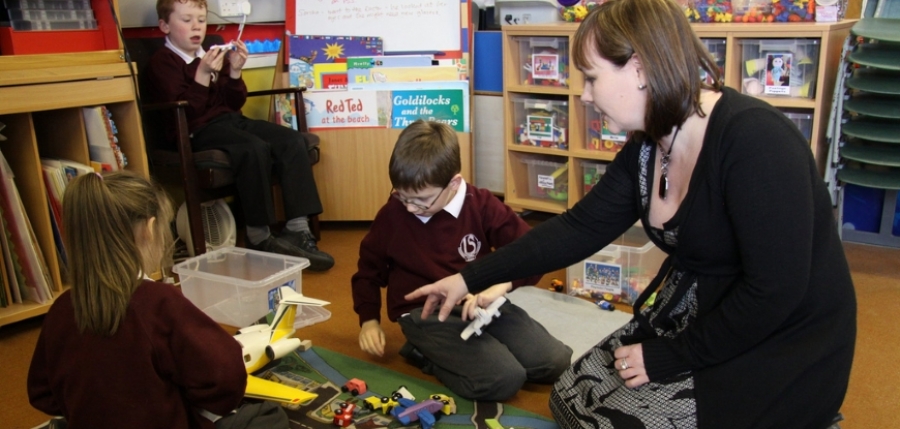Thankfully, times have changed hugely in the last decade, meaning that if a child has special educational needs of any kind, there are plenty of options that can help them in and out of the classroom with their learning in order to give them an extra edge and assist their development.
What are the most common types of SEN?
SEN refers to any learning difficulties or disabilities, which range from problems with understanding and language difficulties right through to physical difficulties and social, emotional and behavioural problems.
Government research published in the last five years suggested that moderate learning difficulties are the most common form of SEN, accounting for around 24 per cent of pupils. Emotional and social difficulties are the second highest, with about 22 per cent of students being affected and speech, language and communications third affecting approximately 16 cent of children (Source: BBC).
The percentage of children with physical disabilities is much smaller, accounting for only 3 per cent of pupils, and children who are on the autistic spectrum account for about 100,000 pupils in the UK.
How to tell if your children or pupils in your class have SEN
So what are the signs to look out for in children who possibly have Special Educational Needs?
It’s important to remember that any children can have special educational needs, irrespective of their social, cultural or economic backgrounds. Many conditions are in fact hereditary, meaning if a parent has dyslexia, it increases the risk of the child also having the condition.
Every child is unique and each condition will manifest itself differently depending on the individual. "Conditions such as Dyslexia occur independently of intelligence."Some don’t become apparent until children start school such as Dyslexia and Dyscalculia, which are often picked up by teachers or parents who notice children falling behind in class or becoming quickly frustrated with concepts that other children grasp quickly.
Conditions such as Dyslexia occur independently of intelligence and are often coupled with strong visual and creative abilities. Teachers may notice that children that have difficulties responding to teaching via written approaches might respond better to visual methods.
If you suspect that one of the children in your class is struggling you can speak to their parents, other teachers and your SEN co-ordinator. The sooner a potential problem is identified the sooner the child can start receiving the help they need.
What financial help is available for schools?
State schools are required by law to make sure special help is available to all pupils with SEN and additional funding is available per pupil to provide equipment and extra resources.
Children having an official SEN statement can help these funding options, but the numbers of formal statements is falling, with less than 20 per cent of children with SEN having one.
Systems of funding can vary between local authorities. Within some areas, if a school takes a child with a SEN statement, it may have to provide some help and additional material for the child from its own budget, rather than relying on additional funding.
Practical ways teachers can help students with SEN
There are several ways that we can help students with SEN with their learning, including breaking down workloads into smaller manageable chunks, using visual cues to aid in their understanding and writing down instructions for each task and tick them off so both student and teacher can see their own progress.
Focus and concentration can be one of the hurdles for children with SEN. It’s best not to overwhelm students with large quantities of work, and realistic timed targets can be set to help monitor progress.
Written work can also impede progress, meaning that it’s important to use other types of learning tools, including visual representations of concepts to support written text, colour coding books and equipment with a different shade for each subject and using alternative methods to record information"Focus and concentration can be one of the hurdles for children with SEN." such as dictaphones and laptops.
Products to help with SEN
No two pupils are the same, meaning that it’s important to find unique solutions to each pupil’s needs. The variety of requirements for individuals is so vast that it has opened up the market, making it far more likely to find good solutions to a child’s specific needs.
It is wonderful to see children getting more and more one to one sessions to help them on their educational journey and, in addition to this companies are investing heavily in products to further help.
Computer programs, reading rulers, pens to aid reading and writing and special glasses are available to schools. Exercise books can be printed entirely with tinted pages, which remove glare for children with Dyslexia or Visual Stress, and can be used by the whole class to avoid children with SEN being singled out.
Special handwriting lines with more space between them, printed in thicker, darker lines can also assist learners and help to improve writing skills. Educational resources that have been written specifically for children with SEN can help to engage pupils and nurture a love of learning that will last a lifetime.
All the investment in identifying and helping children with SEN means that whatever the level or ability a pupil is and no matter how they best process information, it’s much easier than it used to be to find the best solutions to aid with children’s learning, which is fantastic news all round.
Do you teach SEN pupils? Share your tips below!


















